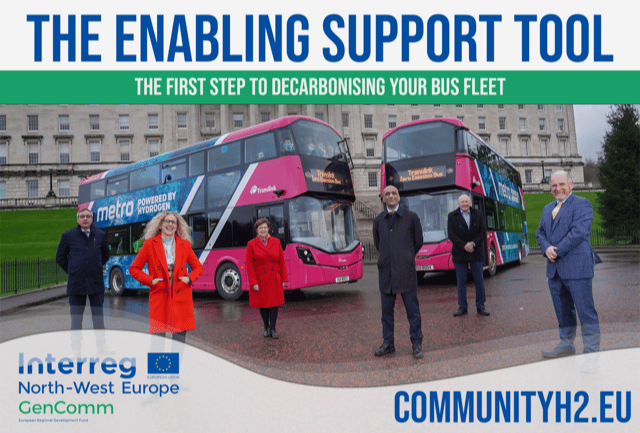This key output of the Belfast Met led Interreg North West Europe hydrogen project GenComm is a tool that allows stakeholders to identify the ideal bus routes that are suitable for the use of hydrogen buses. In addition possible variants for economically valid mixed bus fleets (Hydrogen, Electric and Diesel) are identified. This step to decarbonising your bus fleet will let you know how much it will cost to decarbonise your bus fleet, the Total Cost of Ownership, (TCO) and Total Carbon Abatement, (TCA) for transitioning to a hydrogen based fleet.
The EST is an easy-to-use graphical tool enabling community stakeholders to take full commercial and environmental advantage of renewable data analytics to develop their own energy solutions. It is powering community driven transitions to a zero-carbon footprint. and enabling communities to plan their H2-based energy solutions, decarbonise energy needs and plan their pathway to net zero.
The model gives you an estimate of how valid it is for your bus fleet to switch to hydrogen. To complete the EST you are required to input some general information about your bus fleet such as fleet size and operational time. At the conclusion of your information entries on the online tool you will be presented with charts that display the TCO and TCA of the bus fleet for the information provided. This compares the fuel types of hydrogen, battery, electric and traditional diesel drive mobility types as well as a mixed fleet approach.
Key information required for the online entry in the tool includes how many busses are in your fleet, what are the average operational times for busses in the fleet, steepness of routes, whether single deck, double decker or articulated busses are involved, and price of fuel in your area.
Cost effective decarbonisation and energy security are the drivers of the EST. Finding the right role for hydrogen is very much a part of the EST and GenComm itself. You can view the EST here: communityh2.eu
GenComm Programme Manager Paul Mc Cormack welcomed the tool going live globally today saying: “Hydrogen is a growing commodity. This platform allows users to make informed decisions based on real data analysis to optimise their renewable energy use in order to achieve maximum impact in decarbonising their communities. The EST allows communities to plot their transition journey to net zero.”
Tim Williamson from the GenComm Partner Hy Energy Consultancy added: “The model, Developed by Tadgh Cummins of the GenComm Partner University of Galway, has been integrated into an easy-to-use online form, and is the perfect opportunity for bus operators to get a sense of where they should aim their efforts in their decarbonisation processes. The outputs compare between traditional diesel, battery electric, fuel cell and a mixed fleet approach which uses both battery electric and fuel cell and can give a launching point from where bus operators can begin their decarbonisation journey.”



